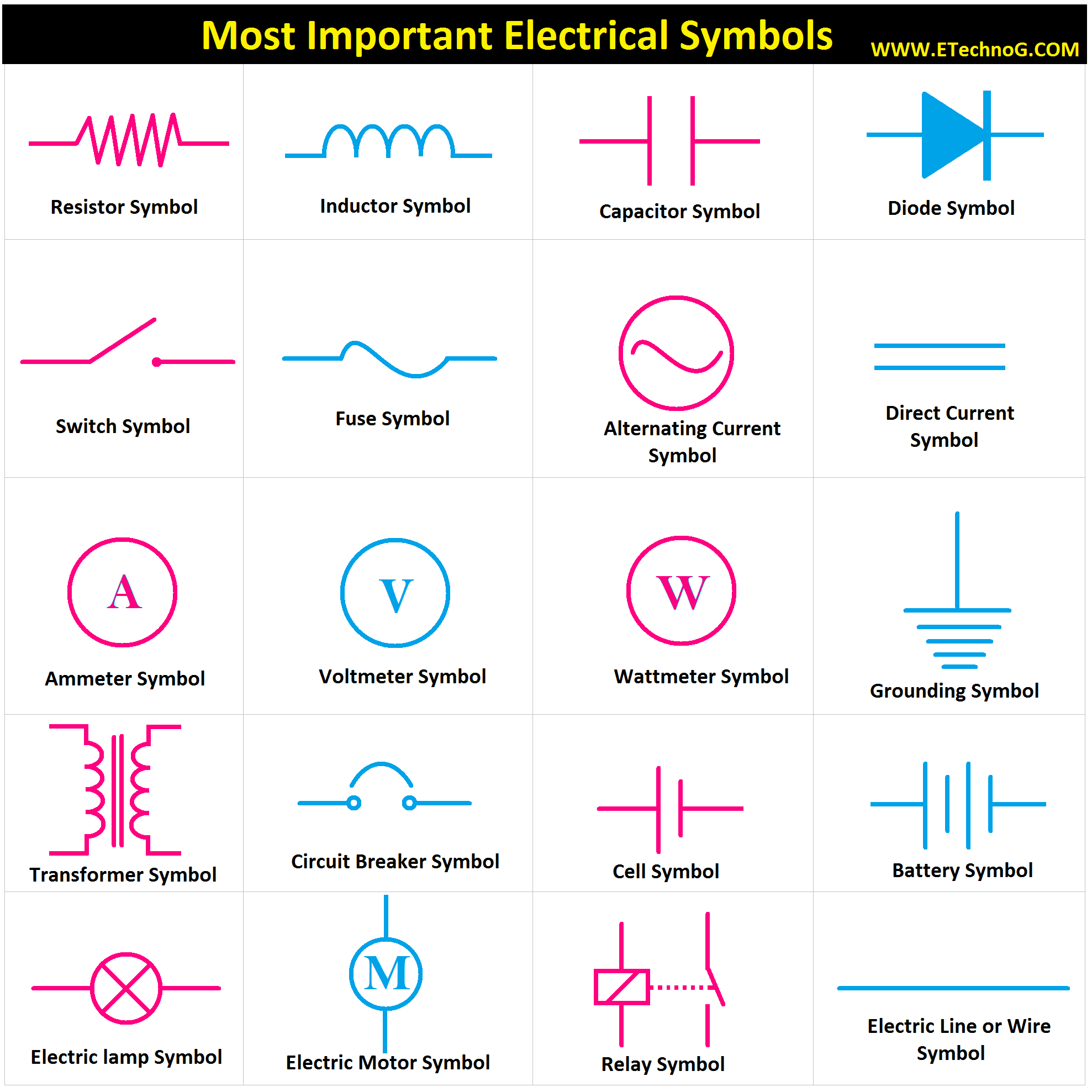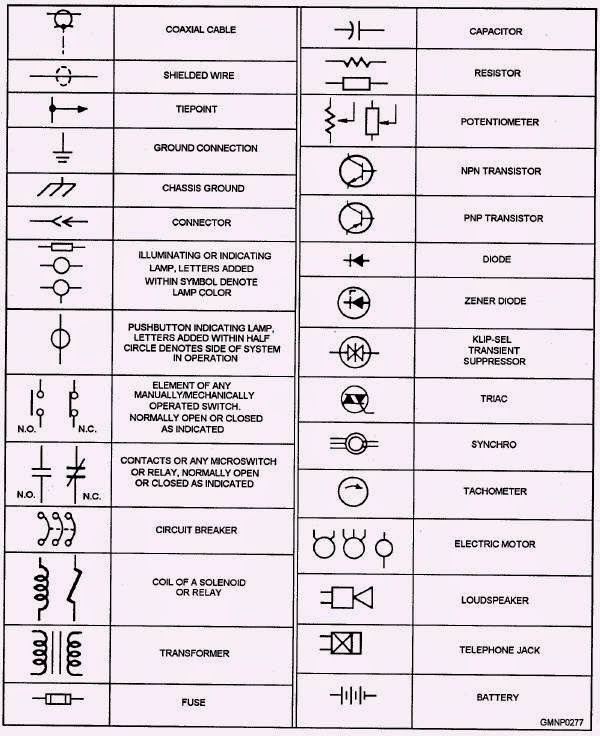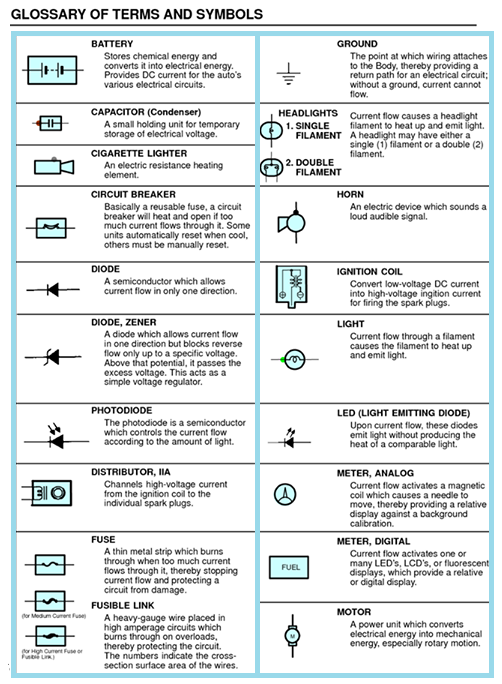Decoding Electrical Blueprints: A Guide to Common Electrical Symbols
Imagine trying to assemble a complex piece of furniture without instructions. Frustrating, right? Electrical diagrams are the instruction manuals of the electrical world. And just like furniture assembly instructions rely on symbols, so too do electrical diagrams. Understanding these common electrical symbols is fundamental for anyone working with or learning about electrical systems.
These symbols, a visual shorthand for various electrical components, provide a concise and universally understood way to represent complex circuitry. They allow electricians, engineers, and even DIY enthusiasts to quickly grasp the layout and function of an electrical system, facilitating everything from simple home wiring projects to the design of intricate industrial power grids. This guide delves into the world of common electrical symbols, providing a comprehensive overview of their meaning, importance, and practical applications.
Electrical symbols have evolved alongside the development of electrical technology. Early diagrams often employed rudimentary drawings or descriptive text, leading to inconsistencies and misinterpretations. The standardization of symbols emerged as a necessity to ensure clear communication and prevent errors. Organizations like the International Electrotechnical Commission (IEC) and the Institute of Electrical and Electronics Engineers (IEEE) have played crucial roles in establishing and maintaining these standards, ensuring a common visual language for electrical professionals worldwide.
The importance of accurately interpreting electrical symbols cannot be overstated. Misunderstanding a single symbol can lead to incorrect wiring, malfunctioning equipment, or even hazardous electrical shocks. In construction and maintenance, these symbols are critical for ensuring safety and proper functionality. They bridge the gap between the design blueprint and the physical installation, allowing electricians to translate the schematic into a functioning system.
One of the primary challenges associated with electrical symbols is the sheer number and variety of symbols in use. While standardized symbols exist, variations can occur depending on the specific application or industry. This necessitates ongoing learning and familiarity with the relevant standards. Moreover, keeping up-to-date with evolving symbol standards is crucial for professionals in the electrical field.
For example, a simple switch is represented by a small break in a line, indicating its ability to open and close the circuit. A resistor, which impedes the flow of current, is symbolized by a zigzag line. Understanding these basic symbols is the first step toward reading and interpreting more complex diagrams.
One benefit of standardized electrical symbols is their universal understanding. Regardless of language or geographical location, a properly drawn electrical diagram can be interpreted by anyone familiar with the standard symbols. This facilitates international collaboration and knowledge sharing within the electrical engineering community. Additionally, the use of symbols allows for concise representation of complex circuits, making diagrams easier to read and understand compared to lengthy textual descriptions. Finally, the consistent application of standardized symbols reduces ambiguity and the risk of misinterpretations, improving safety and efficiency in electrical work.
If you're working with electrical systems, becoming proficient in reading and interpreting electrical symbols is essential. Start by familiarizing yourself with the basic symbols representing common components like switches, resistors, and power sources. Utilize online resources, textbooks, and even mobile apps that provide comprehensive symbol libraries. Practice reading simple circuit diagrams and gradually progress to more complex ones. Regular practice and ongoing learning are key to mastering the language of electrical symbols.
Advantages and Disadvantages of Standardized Electrical Symbols
| Advantages | Disadvantages |
|---|---|
| Universal Understanding | Requires Initial Learning |
| Concise Representation | Potential for Variations |
| Reduced Ambiguity | Need to Stay Updated |
Best practices for working with electrical diagrams include always referencing the relevant symbol standards, double-checking symbol interpretations to avoid errors, and ensuring that all diagrams are clearly labeled and organized. Using software tools designed for creating and editing electrical diagrams can also improve accuracy and efficiency.
Examples of real-world applications of electrical symbols include building wiring diagrams, automotive electrical systems, industrial control panels, and electronic circuit designs. In each of these applications, the use of symbols is crucial for ensuring proper operation and safety.
Challenges in using electrical symbols might involve variations in standards, the complexity of some diagrams, or the need for specialized knowledge in specific industries. Solutions often involve consulting relevant standards documents, seeking expert advice, and utilizing software tools that provide automated symbol libraries and checking features.
Frequently Asked Questions about electrical symbols often include queries about specific symbol meanings, variations in standards, and resources for learning more about electrical diagrams. Online forums, industry organizations, and educational institutions can provide valuable information and support.
Tips and tricks for interpreting electrical symbols include paying close attention to the orientation and context of the symbol, referring to comprehensive symbol libraries, and using mnemonic devices to memorize complex symbols.
In conclusion, understanding common electrical symbols is indispensable for anyone involved with electrical systems. These symbols provide a concise and universally understood language for representing complex circuits, ensuring clear communication and reducing the risk of errors. Mastering the interpretation of these symbols is crucial for safety, efficiency, and effective communication in the electrical field. Whether you're a seasoned electrician or just beginning your journey in the world of electronics, investing time in learning and practicing with electrical symbols is an investment in your safety and success. Continue to explore resources, practice regularly, and stay updated with the latest standards to ensure your proficiency in this essential aspect of electrical work. This knowledge will empower you to confidently navigate the intricate world of electrical systems and contribute to their safe and efficient operation. Remember, understanding these symbols isn't just about reading a diagram; it's about understanding the language of electricity itself.
Unlocking the power of food grade ethanol 95 alcohol
Sierra hills benjamin moore the lowdown on this desert inspired hue
Unlocking the mystique of colonial house colors









